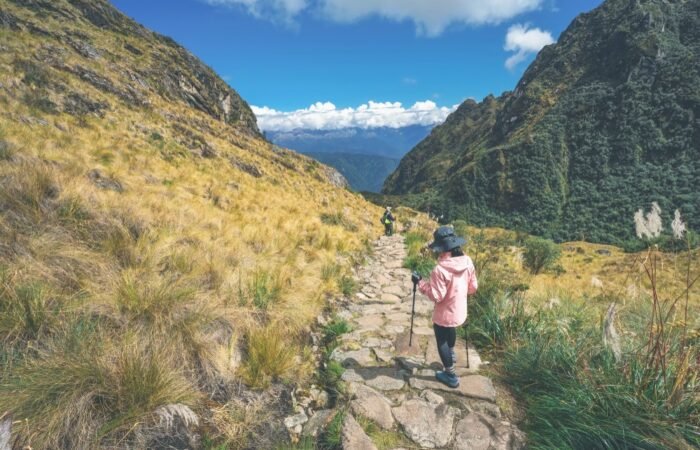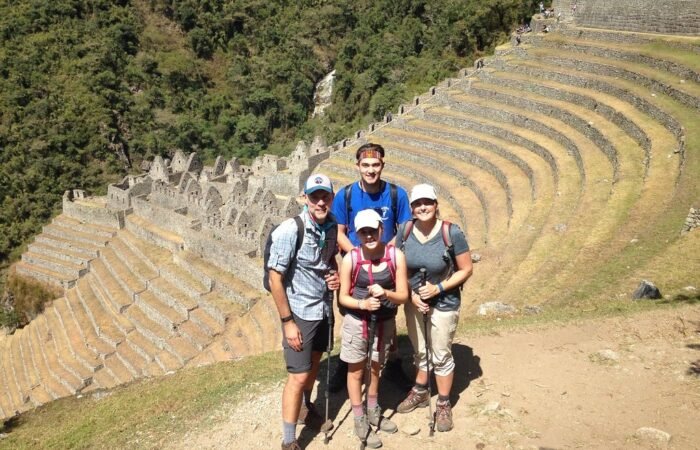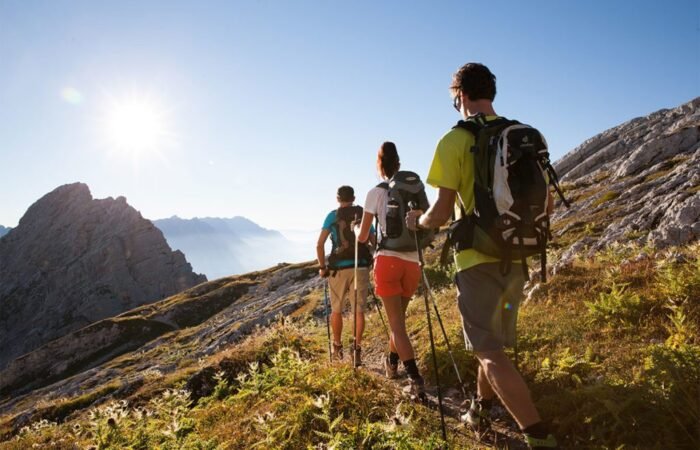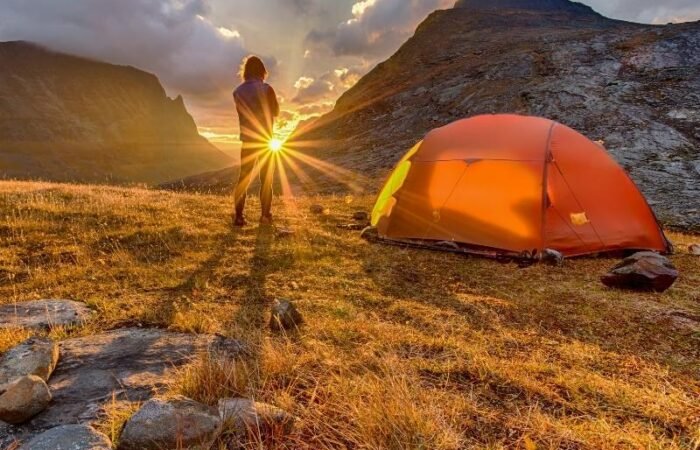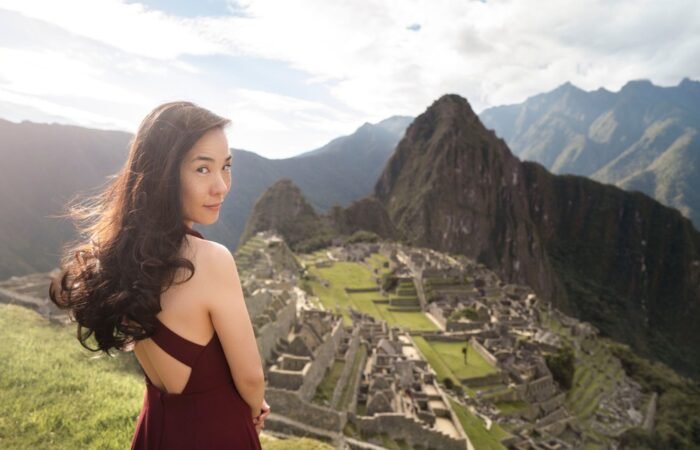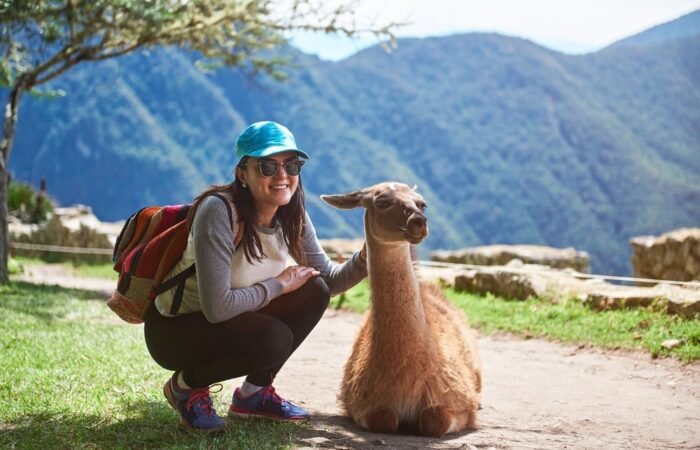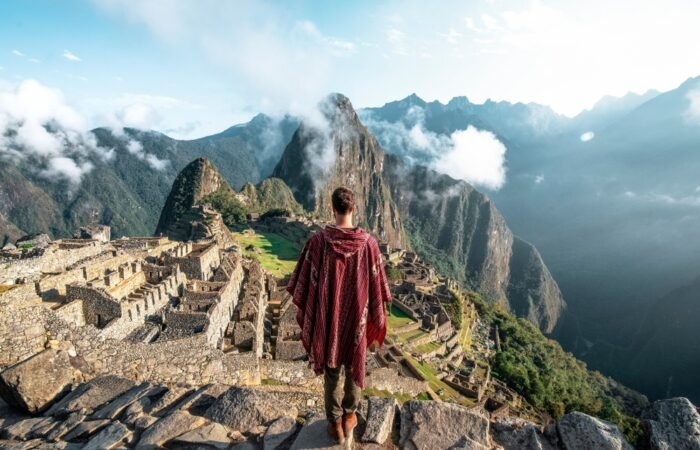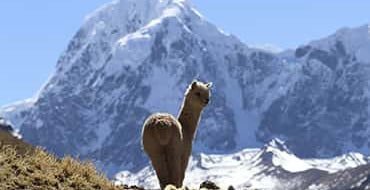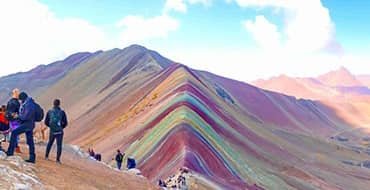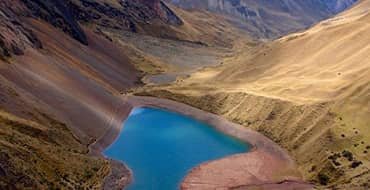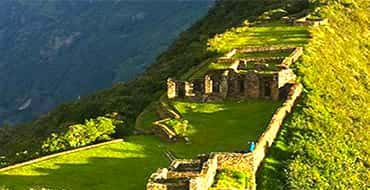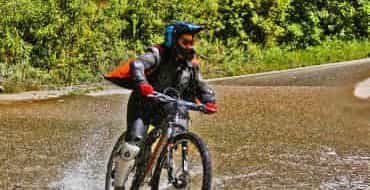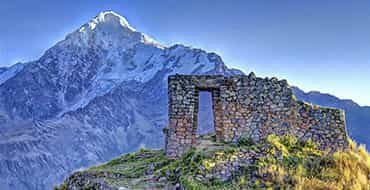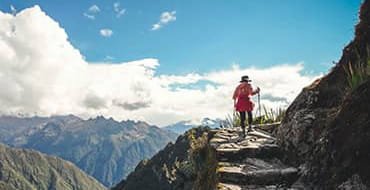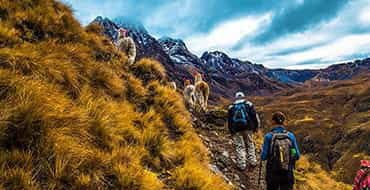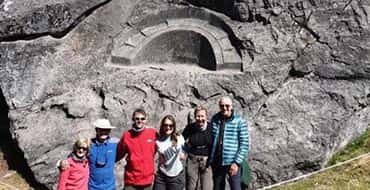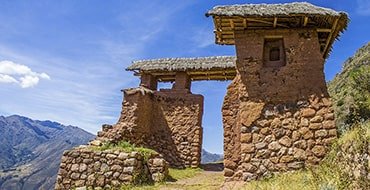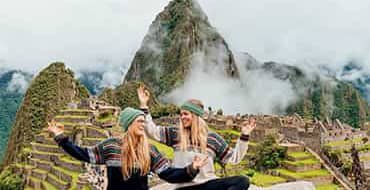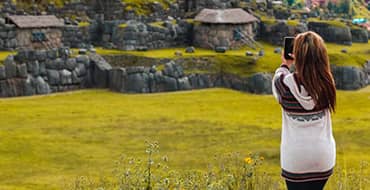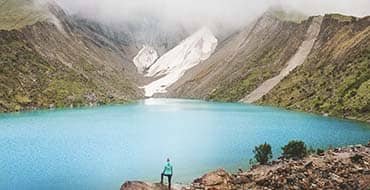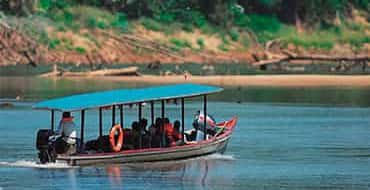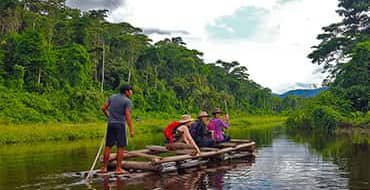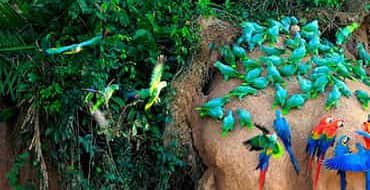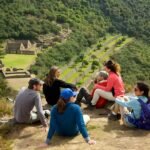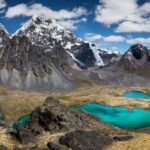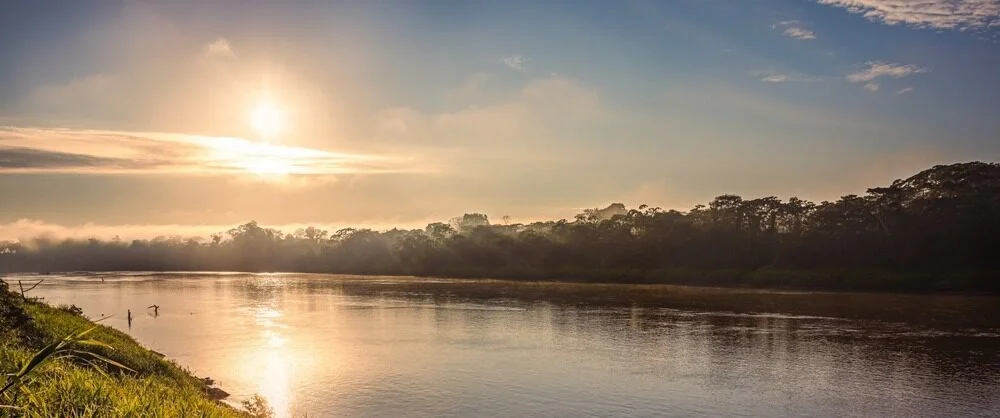
Introduction to Tambopata National Reserve
Tambopata National Reserve, located in the southeastern region of Peru, spans approximately 1.5 million acres and is nestled within the Amazon rainforest. The reserve lies near the confluence of the Tambopata and Madre de Dios rivers, providing a rich ecosystem that boasts an exceptional array of biodiversity. Established in 1990, the reserve was created to protect this unique environment and its remarkable flora and fauna from deforestation, mining, and other human activities that threaten its integrity. Today, Tambopata is recognized as one of the world’s most significant protected areas due to its vast array of species and ongoing conservation efforts.
This national reserve is part of the larger Madidi-Tambopata Conservation Corridor, which connects several protected areas in both Peru and Bolivia, creating a crucial habitat for numerous plant and animal species. The protected area is home to over 1,200 species of birds, 200 species of mammals, and thousands of species of butterflies, making it an exemplary destination for ecotourism, scientific research, and wildlife observation. Additionally, the location serves as a significant site for the study of tropical ecosystems, attracting researchers and conservationists from around the globe.
Tambopata National Reserve is not only important for its biological diversity but also for its cultural significance. Indigenous communities have inhabited this region for thousands of years, creating a unique relationship with the land and its resources. Their traditions and knowledge contribute to the ongoing conservation efforts, ensuring that the reserve remains a vibrant sanctuary for future generations. For nature enthusiasts and adventure seekers alike, visiting Tambopata National Reserve promises a chance to experience the wonders of the Amazon, centered on a commitment to protecting this vital environmental treasure.

How to Get to Tambopata National Reserve
Reaching Tambopata National Reserve, located in the heart of the Peruvian Amazon, offers a range of accessible transportation options. The nearest major city is Puerto Maldonado, which serves as the principal gateway for visitors. Travelers typically begin their journey from either Puerto Maldonado or Cuzco. For those starting from Cuzco, a combination of flights and road travel is common.
Flights from Cuzco to Puerto Maldonado are offered by several airlines, with flight durations averaging around 30 to 45 minutes. This is the quickest and most convenient option for time-sensitive travelers, allowing them to avoid lengthy bus rides. Upon arrival at the Puerto Maldonado airport, visitors can easily arrange for ground transportation to various lodges or tour operators within the reserve, often found in the vicinity of the airport.
An alternative to flying is taking a bus from Cuzco to Puerto Maldonado, which allows for a more scenic view of the diverse landscapes of Peru. The bus journey can take approximately 12 hours, depending on road conditions and specific routes. Numerous bus companies operate this route, so it is advisable to book tickets in advance, particularly during peak tourist seasons. Buses typically depart from the Cuzco terminal and provide comfortable seating options.
Once in Puerto Maldonado, visitors have the option to reach Tambopata National Reserve using boat transfers. This is a common method of accessing more remote areas of the reserve. Local tour companies often provide boat services along the Madre de Dios River, a picturesque journey that enhances the adventure of arriving at the reserve, while also allowing for exploration of wildlife and natural landscapes en route.
They may also offer guidance on the best routes and arrangements tailored to the specific needs of travelers. It is important to plan ahead and choose the option that best fits one’s travel itinerary and preference for comfort, ensuring a smooth journey to this remarkable natural sanctuary.
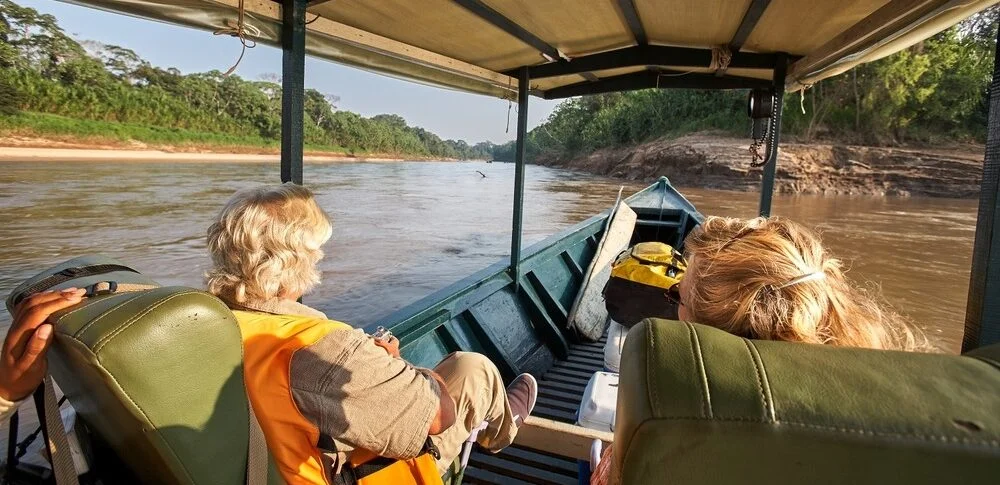
The Best Time to Visit Tambopata
Tambopata National Reserve, located in the Amazon Basin of Peru, offers visitors a unique opportunity to experience its rich biodiversity and stunning landscapes. The timing of your visit plays a crucial role in maximizing these experiences, with two distinct seasons shaping the climate and wildlife activity in the reserve: the dry season and the rainy season.
The dry season typically spans from May to October. During this period, the weather is characterized by lower humidity and minimal rainfall, making it ideal for exploring the reserve’s extensive network of trails and waterways. Visitors are likely to encounter a wider variety of wildlife, as animals are more active and easier to observe. Additionally, many of the activities, such as bird watching, hiking, and canoeing, are most enjoyable in these conditions. Notably, this season witnesses the migration of numerous bird species and the formation of vibrant wildlife gatherings around water sources.

Permits and Regulations for Visiting Tambopata National Reserve
Visiting the Tambopata National Reserve entails a clear understanding of the permits and regulations that govern this stunning tropical ecosystem. To enter the reserve, visitors are required to pay an entrance fee, which contributes to the conservation efforts aimed at preserving its rich biodiversity. The fees may vary depending on the length of stay and type of activities planned. It’s advisable to check with the local authorities or your tour operator for the most current rates.
For specific activities such as birdwatching, trekking, or guided tours, additional permits may be necessary. These permits are often secured through authorized tour operators who ensure compliance with both national and local regulations. Birdwatching, in particular, is a popular activity in Tambopata due to its rich avian diversity, and obtaining the appropriate permission is crucial to protect the habitats of these species. Organizing a visit through a reputable operator not only streamlines the permitting process but also enhances the overall experience by providing knowledgeable guides familiar with the region.
Alongside permits, visitors must adhere to essential conservation guidelines to minimize their impact on the environment. This includes maintaining a safe distance from wildlife, adhering to designated trails, and avoiding the collection of flora or fauna. As an integral part of the Amazon rainforest, Tambopata is home to numerous endangered species and unique ecosystems that require protection. Visitors are encouraged to follow the principles of responsible tourism by minimizing waste, respecting cultural heritage, and engaging in sustainable practices during their stay.
Overall, a well-planned visit to Tambopata National Reserve ensures not only enjoyment of its natural wonders but also respect for the intricate balance that sustains its ecology. Understanding and complying with the necessary permits and regulations is paramount to a fruitful and responsible visit.

What to See and Do in Tambopata National Reserve
Tambopata National Reserve is a stunning expanse of diverse ecosystems that beckons nature enthusiasts and adventure seekers alike. Among the numerous activities available, birdwatching is often considered one of the highlights. The reserve is home to over 600 species of birds, including iconic varieties such as the Harpy Eagle and the vibrant Macaw. Facilitated by expert guides, birdwatchers can explore the myriad of trails and ecosystems to witness the stunning avian life in their natural habitat.
In addition to birdwatching, visitors can indulge in hiking through well-maintained paths leading to breathtaking viewpoints. These trails wind through lush forests, offering glimpses of the diverse plant species and towering trees endemic to the Amazon rainforest. Guided hikes provide valuable insights into the ecological significance of the region, as well as opportunities to spot other wildlife, such as capybaras and jaguars, which inhabit this rich environment.
Another must-visit attraction in Tambopata are the famed clay licks. These natural formations draw various species of birds and mammals, particularly macaws and tapirs, which consume the mineral-rich clay to supplement their diets. Observing this ritual can be a unique experience, providing both an educational and captivating aspect of the region’s biodiversity.
For those seeking a different perspective, night safaris offer a thrilling opportunity to explore the wonders of the Amazon after dark. Guided by knowledgeable experts, tourists can uncover the nocturnal behaviors of myriad species, from owls to insects buzzing in the rainforest night. Overall, Tambopata National Reserve presents an array of experiences for its visitors, encapsulating the essence of biodiversity. Whether through birdwatching, hiking, visiting clay licks, or embarking on a night safari, tourists are guaranteed an unforgettable experience immersed in nature.

Accommodations and Lodging Options
When planning a visit to Tambopata National Reserve, selecting the right accommodation is crucial for maximizing your experience. The region offers a diverse array of lodging choices tailored to meet the varied preferences and budgets of visitors. Among options available, eco-lodges are particularly popular. These establishments are designed to minimize environmental impact while providing comfort, allowing guests to immerse themselves in the stunning natural surroundings. Many eco-lodges offer guided tours, ensuring that visitors can explore the rich biodiversity of the reserve.
Prices for eco-lodges can vary significantly, generally ranging from moderate to high-end options. Amenities typically include private or shared accommodations, on-site dining, and access to knowledgeable guides who can enhance the exploration experience. For those seeking a more rustic adventure, camping near any of the designated campsites within the reserve presents an opportunity for a unique encounter with nature. Camping provides visitors with a chance to connect intimately with their environment, often accompanied by the sounds of wildlife at night.
It is also worth considering staying in the nearby towns or lodges just outside the reserve, where additional amenities such as restaurants, shops, and transportation services are available. These accommodations often offer lower prices, opening options for budget-conscious travelers. However, they may require additional travel time to access the main attractions within the reserve.
Ultimately, selecting the best lodging option will depend on individual preference and budget. Whether you opt for an eco-lodge providing comfort and guided experiences or a campsite that emphasizes adventure, Tambopata National Reserve has something suitable for every type of traveler. Visitors are encouraged to book accommodations in advance to secure their preferred choice during peak travel seasons.


Travel Tips and What to Pack
Visiting the Tambopata National Reserve requires thorough preparation to ensure a safe and enjoyable experience. The first step is to pack appropriate clothing that caters to the tropical climate of the Amazon. Lightweight, breathable fabrics are advisable, as temperatures can soar during the day. Long-sleeved shirts and long pants are essential to protect against insects and prevent sunburn. Waterproof gear, such as a rain jacket and quick-dry clothing, is also crucial, given that rainfall is common in the region.
When it comes to footwear, sturdy, closed-toe shoes suitable for hiking are a must. Consider packing rubber boots if you plan to venture into marshy areas. Additionally, don’t forget to bring a hat, sunglasses, and biodegradable sunscreen to shield yourself from the sun’s rays while being kind to the environment.
Health and safety precautions should be a priority. It is advisable to consult a healthcare professional about vaccinations and medications before your trip. Malaria prophylaxis may be recommended, and travelers should carry a basic first-aid kit including insect repellent containing DEET, antihistamines, and any personal medications. Also, stay hydrated by carrying a reusable water bottle and water purification tablets, as access to clean drinking water may be limited.
Respecting the local environment and wildlife is paramount in Tambopata National Reserve. Avoid bringing single-use plastics and opt for eco-friendly products whenever possible. Observe wildlife from a distance and avoid feeding animals to minimize human-wildlife interactions. Being conscious of your ecological footprint will help preserve the unique biodiversity of the region for future visitors.
In conclusion, preparing adequately for your trip to Tambopata National Reserve enhances not only your experience but also ensures that you contribute to the conservation of this incredible ecosystem. By following these travel tips and packing thoughtfully, you can fully enjoy the natural wonders the reserve has to offer.

Local Culture and Communities
Visiting Tambopata National Reserve is not solely about the breathtaking biodiversity and stunning landscapes; it also offers a glimpse into the rich cultural tapestry woven by the indigenous communities residing in the region. The area is home to several ethnic groups, including the Ese Eja, Harakbut, and others, each possessing unique traditions, languages, and customs that reflect their deep connection to the rainforest.
The Ese Eja people, for instance, have a profound understanding of their natural environment. Their knowledge is passed down through generations and encompasses various aspects of life, including medicinal practices, agricultural methods, and sustainable fishing techniques. Engaging with these communities offers visitors an opportunity to learn firsthand about their sustainable practices and traditional ways of life, contributing to a greater appreciation of the interconnectedness between culture and nature.
When visiting these communities, it is crucial for travelers to approach interactions with respect and openness. Engaging in activities such as guided tours led by local community members can provide insights into their customs, including traditional ceremonies, dance, music, and handicrafts. These participatory experiences allow visitors to witness the beauty of indigenous art forms and the stories they convey, highlighting the cultural significance behind each piece.
Moreover, participating in local workshops or cultural events enriches the travel experience while also promoting economic sustainability for the communities. Such engagement helps ensure that their traditions thrive and are preserved for future generations. Visitors are encouraged to support local artisans by purchasing handmade goods directly from them rather than from marketplaces, thereby ensuring that profits go back into the community.
Incorporating these respectful interactions into your visit will not only enhance your understanding of the local culture but also contribute positively to the livelihoods of the indigenous people in the vicinity of Tambopata National Reserve.

Conclusion and Final Thoughts
Visiting Tambopata National Reserve offers an unparalleled opportunity to immerse oneself in one of the world’s most diverse ecosystems. Throughout this guide, we have highlighted the myriad attractions that make Tambopata a must-visit destination for nature enthusiasts and adventure seekers alike. From the breathtaking landscapes teeming with flora and fauna to the rich cultural experiences provided by local communities, every aspect of the reserve contributes to its unique allure.
As you venture into this remarkable Amazonian paradise, it is crucial to embrace the adventure with an open heart. Take the time to explore various trails, appreciate the sounds of the jungle, and observe the myriad wildlife that calls this reserve home. Activities such as guided walking tours, canopy observations, and river expeditions allow visitors to engage with the environment while fostering a deeper appreciation for biodiversity. Each experience contributes not only to personal enjoyment but also to a greater understanding of the delicate ecosystems that must be preserved.
Furthermore, engaging in ecotourism in Tambopata fosters a positive impact on both the local economy and conservation efforts. By choosing responsible travel options and supporting sustainable practices, visitors can help ensure that future generations will also have the chance to discover the beauty of the Amazon rainforest. Respect for the environment, as well as the cultures of the indigenous peoples, is essential to maintaining the integrity of this beautiful area.
In conclusion, Tambopata National Reserve stands out as an extraordinary destination that awaits your exploration. With its endless opportunities for adventure and education, it genuinely represents a chance to connect with nature. Embrace the spirit of ecotourism and consider your role in conserving this invaluable natural heritage as you embark on your journey to one of the most biodiverse regions of the planet.
